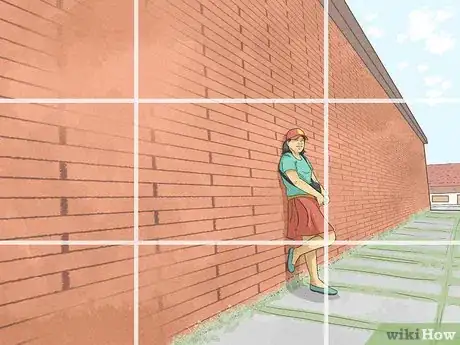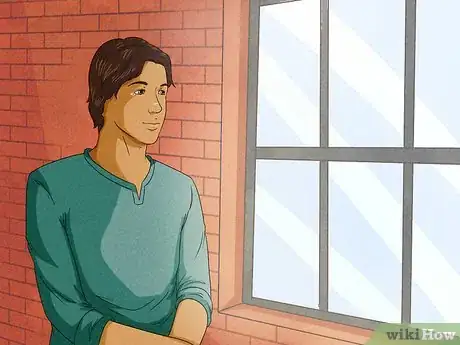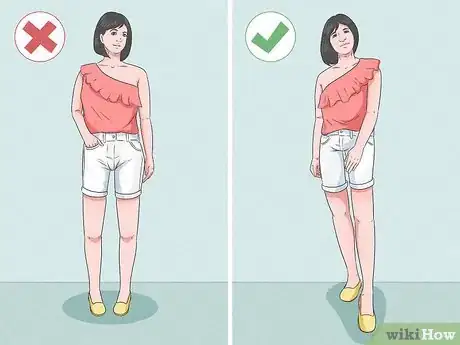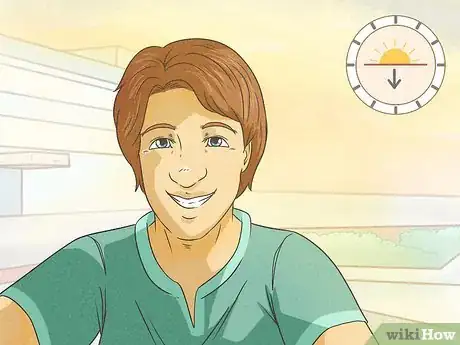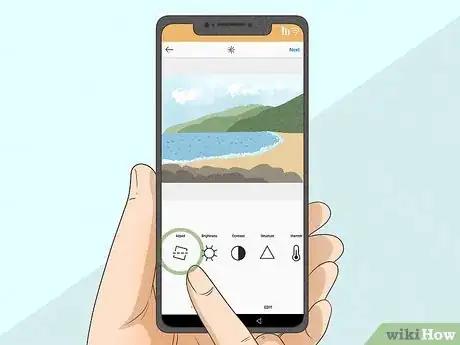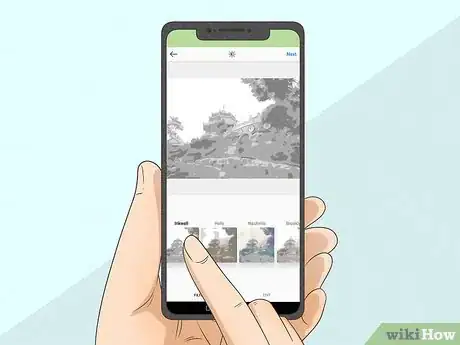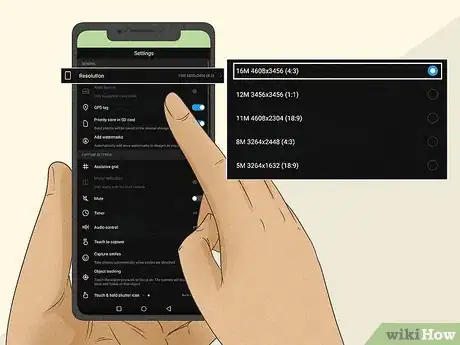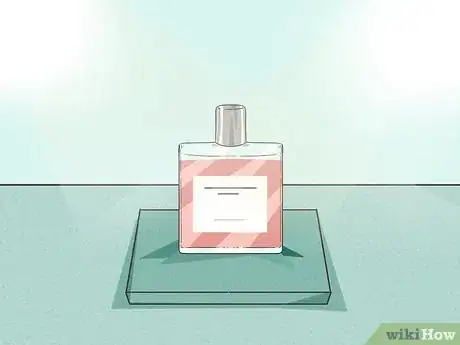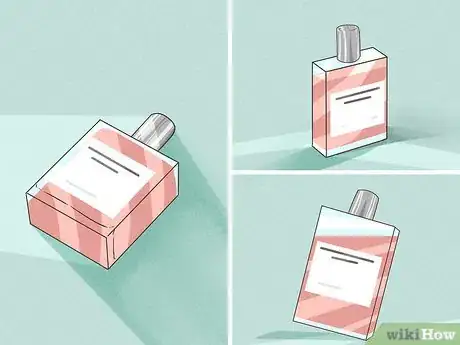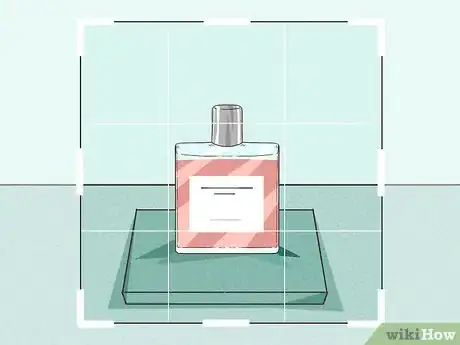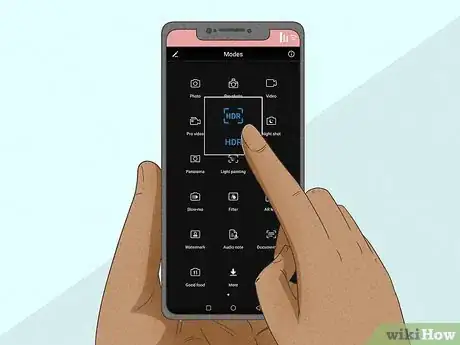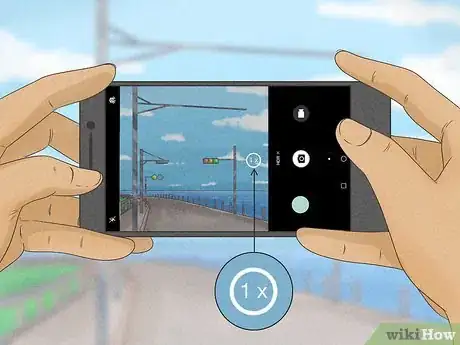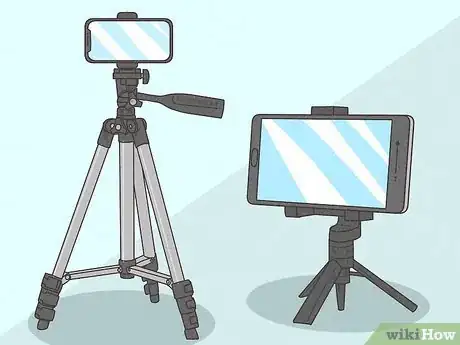This article was co-authored by Cory Ryan and by wikiHow staff writer, Hannah Madden. Cory Ryan is a Professional Wedding Photographer who runs Cory Ryan Photography based in Austin, Texas. She has over 15 years of photography experience and specializes in weddings and events. Her work has been featured in publications such as The Knot, Style Me Pretty, and Junebug Weddings. She received a BA in Media Production and Broadcast Journalism from the University of North Carolina - Chapel Hill.
There are 17 references cited in this article, which can be found at the bottom of the page.
wikiHow marks an article as reader-approved once it receives enough positive feedback. This article received 19 testimonials and 88% of readers who voted found it helpful, earning it our reader-approved status.
This article has been viewed 1,931,306 times.
Some people think that great photography requires an expensive camera, but don't worry—good technique is much more important than costly equipment. Brushing up on your basic photography skills is beneficial no matter what camera you’re working with, and you don’t even need to memorize all the fancy lingo to get started. As you practice, try to take as many photos as possible so you have a few options to choose from when you’re done. And above all, try to have fun as you mess around with your camera to take fun, fresh pictures!
Steps
Good Photography Basics
-
1Choose a focus for your photo. It is important to have a central focus for your photo so your audience knows what to look at. This item or person should be at the center of the photograph or highlighted in some other way so that they stand out. You can take this literally and use an actual framing object, or you can manipulate your shot in some way instead.[1]
- For example, you might use an archway or window as a frame for your subject. Taking the photo so that the subject is within the archway or window, either in the foreground or background, will help emphasize the photo.
- You can also use people as a frame. Once you’ve picked your central focus, frame your shot so that the subject is surrounded by people from all sides.
- You can also emphasize your focus by using the rule of thirds. This is when you divide your shot into 3 vertical sections and 3 horizontal sections and then take the shot with your focal point in the center of this grid. It’s both pleasing to the eye and easy to incorporate into your technique.
-
2Change up your lighting. Identifying where your light is coming from is an important part of ensuring the best lighting for your subject because the light needs to be on your subject to illuminate it properly. Before you take a photo, take a moment to look around you and determine which direction the light is coming from, then adjust your shot if you need to.[2]
- For example, if you are outdoors, figure out where the sun is and observe how it is casting light on your subject. Consider what angle might be the most flattering or interesting for photographing your subject. If possible, shoot an hour after sunrise or before sunset to get some really dynamic light.
- Avoid taking pictures with the light source directly behind you. This can make your photos look somewhat boring and flat. Instead, always try to position yourself so that you are shooting your subject at an angle relative to the light. Side-light is typically ideal.
Advertisement -
3Eradicate red-eye by turning off your flash. The red eye is caused by the camera’s flash reflecting off of the subject’s retinas, and it usually happens when you are taking photos in low light.[3] To avoid getting a red-eye effect, you can try:
- Turning on more lights.
- Telling your subjects to look away from the camera.
- Turning on the red-eye function. Most digital cameras and newer smartphones have this feature and it can help to prevent red-eye shots using editing software after the fact.
-
4Make your shot multi-dimensional with foreground and background items. If you want your subject to seem small, then you might place something in the foreground of the shot. If you want your subject to look large, then you might place something in the background. If there isn’t any dimension in your photos, they could look a little flat.[4]
- For example, you might take a picture of someone standing on a beach, but photograph the person from far away with a seashell in the foreground. Or, you might photograph the person from a closer vantage point, but capture a seemingly endless white beach in the background.
- If you want to blur out the background a little bit and make your shot more interesting, lower the aperture (or f-stop). This will concentrate the depth of field on your subject.
-
5Get up close and personal to zoom in on your subject. Sometimes photos do not look as good as they could because you are too far away from your subject. If you notice that the details of your subject are hard to make out, then try moving a little closer until you like how the photo looks.[5]
- For example, if you took your first shot while standing 10 feet (3.0 m) away, then take the next one from 5 feet (1.5 m) away. Keep checking your shots and adjusting your distance until you have captured the desired amount of detail in your shot.
- Toy around with the angle you’re shooting at to find something dynamic and interesting that suits the subject.
Photography Techniques for Social Media
-
1Look natural by keeping the flash off. Although a flash can be helpful in super dark photos, most of the time it will make your photography subject look washed out. If you can avoid it, try to keep the flash off when you take your pictures to make them look better when you upload them to social media.[6]
- The flash can also bounce off of certain types of makeup, making a strange shimmer effect that doesn’t look very natural.
- Natural light is the best light source, especially for phone cameras, to make you or your subject look flattering.
- Look for locations on your subject where the light creates unique contrasts or highlights. This is often where the best photos can be taken.
-
2Avoid cluttered photos by removing unnecessary objects. Since most people look at social media on their phones, uploading a cluttered photo can be hard to take in on such a tiny screen. Try to keep the focus of the shot to one subject so that your followers can easily make out what you’re trying to draw attention to.[7]
- For example, if you’re taking a nature shot, choose one mountain or plant to be the focal point.
- Or, if you’re taking a selfie, stand in front of a solid-colored background.
- When you take photos of other people, try to blur the background so the person in the foreground stands out. If you’re using a smartphone, try switching to “Portrait Mode” to do this automatically.
-
3Lengthen your legs in full-body shots to look taller. If you’re taking a picture of your outfit, shift your weight onto one leg and extend your other leg out in front of you. Point your toe slightly to elongate your body and make yourself look taller in your photos.[8]
- Shifting your weight to your back foot will bring the majority of your body back and away from the camera while extending your front leg towards the foreground. This gives the illusion of height and length in your body, while still looking natural.
- This can feel funny at first, so try practicing it in the mirror a few times before you use it in a photo.
-
4Use natural lighting to get an effortless, glowing selfie. When you’re searching for a place to take the perfect selfie, try standing in front of a window or going outside for the best lighting. If it’s nighttime or gloomy out, try pointing a yellow-toned light (not fluorescent!) at the ceiling and standing near it. This natural light will bring out your best features and make your skin glow.[9]
- If you can, try taking pictures during “golden hour,” or when the sun starts to set.
- Try taking a couple of selfies in a row so you have a few to choose from when it comes time to upload them.
-
5Crop your photos to upload them on Instagram. When you upload a picture to Instagram, use the “crop” feature on the Instagram tools to make your photo smaller so it doesn’t take up the whole frame. Doing this can create a more interesting picture and it will provide some variation in your feed.[10]
- Instagram is one of the most popular social media sites for photos. Thinking about how your pictures look on this particular social media platform can be helpful in gaining followers, website clicks, and sales.
- Watch your compositions when you’re shooting so that you don’t need to crop too much in editing.
-
6Keep the filters and photo editing to a minimum. Too many filters can degrade the quality of your photo, and it can make your pictures look a little less natural. Try to use the least amount of filters possible, especially when you take photos of yourself or other people.[11]
- It’s always better to take a quality photo in the beginning so you don’t have to do as much editing later on.
- If you would like to add a filter, try using FaceTune, AfterLight, or the filtering effects on Instagram.
Taking Good Product Photographs
-
1Set your camera to a high resolution. The resolution of your camera affects the detail and the quality of the image. The higher the resolution, the better the photo will look on screens both big and small. Go into your camera settings and set the resolution to “high” so your photos come out looking great.[12]
- You can always lower the resolution after you take the photo if you need the file to be smaller, but you can’t increase the resolution later.
-
2Pick a simple background that isn’t too distracting. A background that’s too wild can detract from your product and be distracting. Try to choose a background that’s one solid color and doesn’t have a lot of details so your product stands out.[13]
- You could use poster paper, a wooden table, a solid-colored rug, a solid-colored sweater, or even a solid-colored wall.
-
3Make your product the star of the show. Although it’s fine to add props and background pieces, too much clutter in the frame can be confusing. If you’re going to add props, keep them small or simple so they don’t overpower your product. When in doubt, use a clean, simple background with good lighting.[14]
- White poster paper can make a good background in a pinch.
- Too many props can make the customer uncertain as to what item you’re selling.
-
4Photograph the product from all angles. No matter what you’re selling, giving your consumers the full picture is an important part of happy, returning customers. Make sure you get the front, back, and sides of your product so there aren’t any surprises when your customer opens up their package.[15]
- Even if you’re selling an item with a back that will be hidden, you should give your customers an idea of what it will look like.
-
5Focus the frame on your product to emphasize it. If your item is too small or too far away, it can be hard to make out the details and it won’t be as striking. Try to fill up your camera’s frame with your product so that it’s visible and there isn’t any room for question about what you’re selling.[16]
- If you need to, you can crop your photos after you take them so your item fills the frame.
-
6Use another object for a size comparison. It doesn’t ha to be an obvious placement, but try to take at least 1 photo of your product next to something else so that customers can get a sense of how large it is. You can use flowers, a book, a piece of furniture, or even a doorway to show, without words, how large the item is.[17]
- For example, if you’re photographing jewelry, try sprinkling some rose petals in the shot.
- Or, if you're selling a blanket, drape it over the back of a couch.
- For wall art, try hanging it on the wall next to framed photographs or posters.
Adjusting Your Camera’s Settings
-
1Use your camera’s automatic modes to easily get the settings you want. Most digital cameras and smartphones have an easy automatic mode that will change your camera’s settings based on the type of subject you are photographing. For example, the camera may detect that you are taking a portrait of someone in low light and adjust the settings to get the best image. Try using your camera’s automatic setting to make it easier to take better photos.[18]
- If your photos come out poorly focused or poorly exposed, then start operating certain functions manually.
- On smartphones, you can leave the HDR, or high dynamic range, on auto as well. This will adjust your photos in real time for the best exposure real-timeing.
-
2Tap and hold to lock your smartphone camera’s focus. If you’re taking a picture of a subject and the focus keeps switching to the background, hold your finger on the camera screen and press down on what you’re trying to photograph. This will “lock” the focus in place so that you can move your camera around while still keeping your subject in focus.[19]
- Some older smartphone models may not have this option, so you can play around with your camera and figure out what options you do have.
-
3Switch to a telephoto lens if your smartphone has one. Some newer smartphone models have 2 cameras: a wide-angle lens and a telephoto lens. If you’d like to zoom in on a subject or tighten up your frame without moving your camera, tap on the “1x” button and switch it to “2x.” This will switch your camera into the telephoto lens mode, and you’ll look like you’re only a few steps away from whatever you’re photographing. To switch back to a wide lens, just click on “2x” again and switch it to “1x.”[20]
- This lens is perfect for photographing wildlife, since you can get up close without having to be physically near your subject.
-
4Steady your camera with a tripod to create sharper images. If you have a hard time keeping your camera steady enough to photograph your subjects, then you might find it helpful to get a tripod. A tripod will keep your camera steady while still allowing you to adjust it to different angles.[21]
- You might consider getting a low-cost tripod to start out with. You can also get mini-tripods that adjust so that you can place them on table tops and photograph from lower angles.
- If you take a lot of selfies, consider getting a selfie stick.
Community Q&A
-
QuestionCan different lenses affect image quality?
 Community AnswerYes. Different types of lenses can create different types of photos. But you can still produce good photos with the basic lense(s).
Community AnswerYes. Different types of lenses can create different types of photos. But you can still produce good photos with the basic lense(s). -
QuestionHow do you get a picture of an animal without he/she moving?
 Community AnswerYou can never be sure of an animal standing or sitting still, but photography is about patience. You must wait until you get the perfect one that satisfies you.
Community AnswerYou can never be sure of an animal standing or sitting still, but photography is about patience. You must wait until you get the perfect one that satisfies you. -
QuestionWhat cameras are recommended?
 Community AnswerSomeone once said, "The best camera is what you got." The camera does not make pictures, it's merely a tool. The person behind the camera is the most important factor. Use whatever camera you have, know every bit of it, and think about the photograph, the composition, perspective, light, shadow, colors, and timing, rather than technical settings. That's what makes a photograph great.
Community AnswerSomeone once said, "The best camera is what you got." The camera does not make pictures, it's merely a tool. The person behind the camera is the most important factor. Use whatever camera you have, know every bit of it, and think about the photograph, the composition, perspective, light, shadow, colors, and timing, rather than technical settings. That's what makes a photograph great.
Warnings
- Ask for permission when taking photos of people, their pets, or their property.⧼thumbs_response⧽
References
- ↑ http://erickimphotography.com/blog/2013/10/29/street-photography-composition-lesson-6-framing/
- ↑ http://petapixel.com/2014/01/24/40-tips-take-better-photos/
- ↑ http://www.allaboutvision.com/resources/red-eye-photo.htm
- ↑ http://petapixel.com/2014/01/24/40-tips-take-better-photos/
- ↑ http://petapixel.com/2014/01/24/40-tips-take-better-photos/
- ↑ https://www.youtube.com/watch?v=iGFy4jb51kQ&feature=youtu.be&t=569
- ↑ https://www.youtube.com/watch?v=iGFy4jb51kQ&feature=youtu.be&t=343
- ↑ https://www.youtube.com/watch?v=pTaHqxjYbqg&feature=youtu.be&t=57
- ↑ https://www.youtube.com/watch?v=6Ef83_k4vYE&feature=youtu.be&t=58
- ↑ https://help.instagram.com/117838865078314
- ↑ https://www.youtube.com/watch?v=6Ef83_k4vYE&feature=youtu.be&t=255
- ↑ https://pages.ebay.com/seller-center/listing-and-marketing/photo-tips.html
- ↑ https://pages.ebay.com/seller-center/listing-and-marketing/photo-tips.html
- ↑ https://www.etsy.com/seller-handbook/article/5-common-photography-mistakes/26988313754
- ↑ https://pages.ebay.com/seller-center/listing-and-marketing/photo-tips.html
- ↑ https://pages.ebay.com/seller-center/listing-and-marketing/photo-tips.html
- ↑ https://www.etsy.com/seller-handbook/article/how-to-photograph-challenging-items/146863877358
- ↑ https://www.youtube.com/watch?v=692UcfPQJcI&feature=youtu.be&t=63
- ↑ https://www.youtube.com/watch?v=iGFy4jb51kQ&feature=youtu.be&t=590
- ↑ https://www.youtube.com/watch?v=RAZtIIe-XHs&feature=youtu.be&t=436
- ↑ https://www.youtube.com/watch?v=RAZtIIe-XHs&feature=youtu.be&t=178
About This Article
To take better photographs, take them in the hour after sunrise or the hour before sunset, which is when the lighting for photographs is best. When you're taking a photo, try to position yourself so the light is hitting your subject at an angle instead of straight on. If you're using a digital camera, set it to the highest resolution possible, which will make your photos look more crisp and vivid. Also, always hold your camera with both hands so it's steady when you're taking your shots. For more tips, like how to add dimension to your photos, keep reading!
